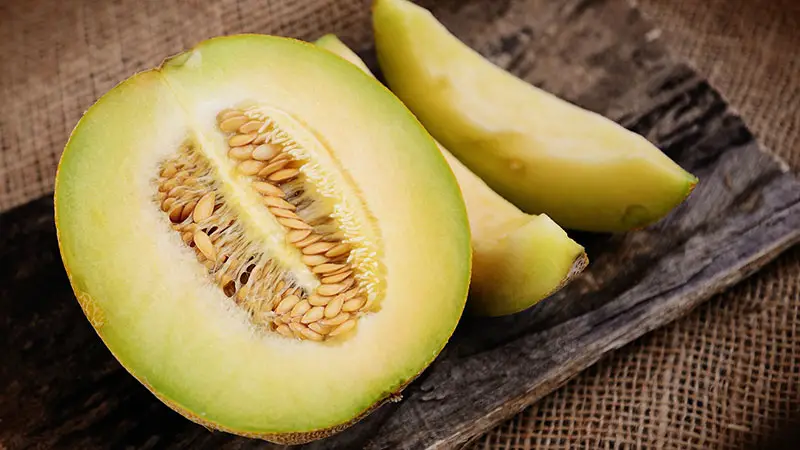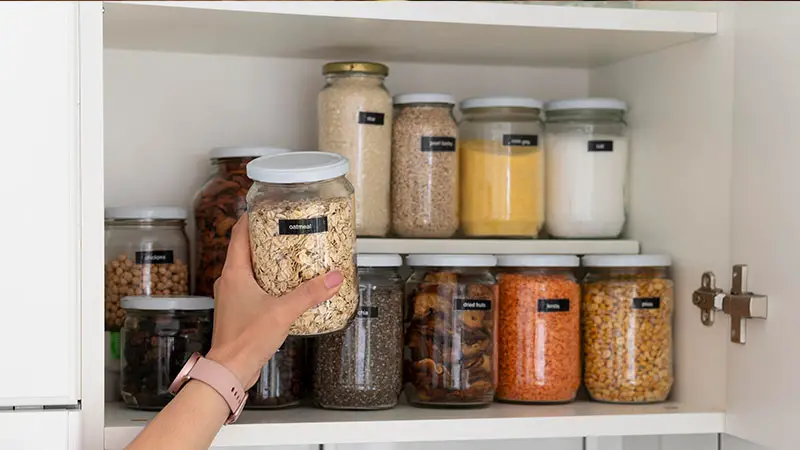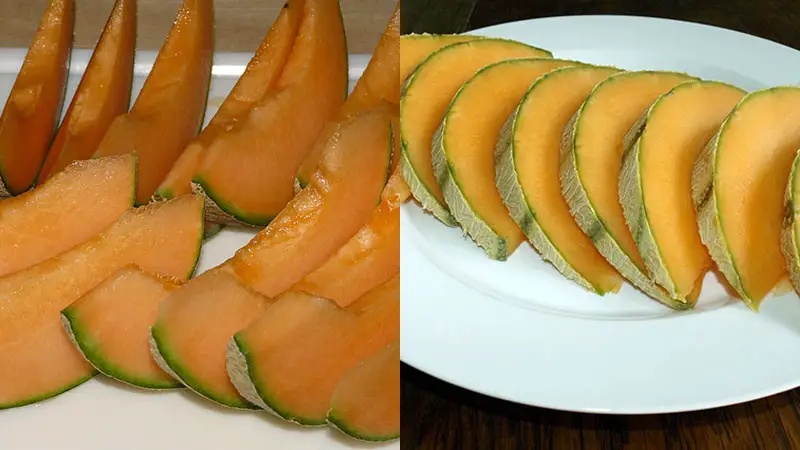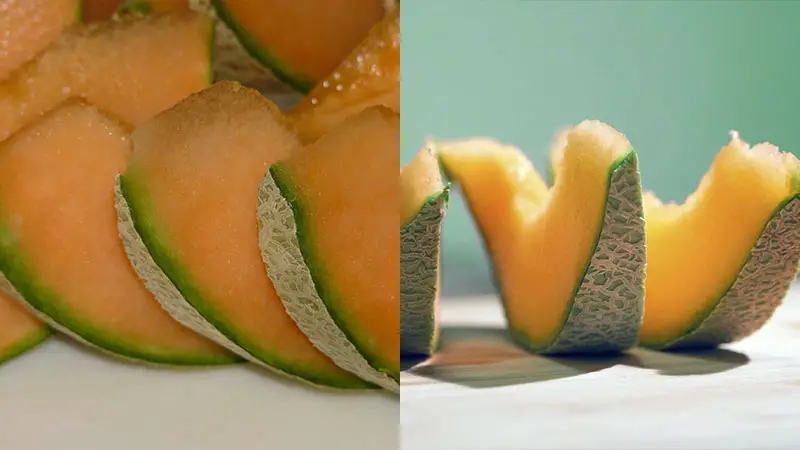When it comes to refreshing summer fruits, honeydew and cantaloupe often top the list. Both melons offer a sweet and juicy treat, but they also pack a nutritional punch that’s worth exploring.
Understanding the differences in their nutritional profiles can help you make informed choices about which to include in your diet.
Honeydew and cantaloupe may look similar, but their nutrient content varies significantly. From vitamins and minerals to calorie counts, each melon brings unique benefits to the table.
Whether you’re aiming to boost your vitamin intake or seeking a low-calorie snack, knowing the nutritional distinctions between these two fruits can guide your next grocery decision.

Honeydew vs. Cantaloupe Nutrition
Honeydew and cantaloupe differ significantly in their nutritional content. Identifying these differences helps make smarter dietary choices.
Calories and Carbohydrates
Honeydew offers 36 calories per 100 grams. It contains 9 grams of carbohydrates, mainly from natural sugars. In comparison, cantaloupe has 34 calories for the same weight with 8 grams of carbohydrates.
These small differences can influence your choice if you’re monitoring calorie or sugar intake. For instance, honeydew might be slightly higher in natural sugar, whereas cantaloupe could be favored for a marginally lower caloric content.
Protein
Regarding protein, honeydew and cantaloupe are almost identical. Each provides approximately 0.8 grams of protein per 100 grams.
While neither melon is a significant protein source, they can contribute a small amount, complementing other protein-rich foods in a balanced diet. For example, pairing melon with a high-protein yogurt can create a nutritious snack.
Fat Content
Both honeydew and cantaloupe are low in fat. Each contains about 0.1 grams of fat per 100 grams. This minimal fat content makes these melons excellent choices for low-fat diets.
Their natural sweetness and juiciness allow them to be satisfying without adding any significant fat. In low-fat meal plans, such as those aiming to reduce cardiovascular risk, both melons easily fit into the diet.
Vitamins and Minerals
Cantaloupe surpasses honeydew in vitamin A content, providing 3,382 IU per 100 grams, compared to honeydew’s negligible amount.
This makes cantaloupe better for boosting vitamin A intake. However, honeydew takes the lead in vitamin C, containing 18 milligrams per 100 grams, whereas cantaloupe offers 36.7 milligrams for the same weight, making it almost twice as rich in this essential nutrient.
Both melons deliver potassium, crucial for muscle function, with honeydew offering 228 milligrams and cantaloupe providing 267 milligrams per 100 grams. These vitamins and minerals can impact energy levels and overall health.
Comparing their nutritional profiles helps tailor dietary choices, catering to specific health needs or preferences.
Whether opting for honeydew’s higher vitamin C or cantaloupe’s richer vitamin A content, both melons offer valuable nutrients contributing to a balanced diet.
Health Benefits

Honeydew and cantaloupe offer distinct health benefits apart from their delightful taste.
Eye Health
Cantaloupe supports eye health through its high vitamin A content. Beta-carotene, the core component, converts to vitamin A, promoting good vision and preventing age-related macular degeneration. Honeydew, although lower in vitamin A, still contributes with smaller amounts of beta-carotene.
Blood Pressure Regulation
Both melons aid in regulating blood pressure due to their potassium content. Honeydew provides about 228 milligrams of potassium per 100 grams, helping maintain normal blood pressure levels. Cantaloupe, slightly lower at 267 milligrams per 100 grams, also supports this essential function.
Immune Support
Vitamin C is crucial for immune support, with honeydew being particularly rich in this vitamin. A 100-gram serving of honeydew contains around 18 milligrams of vitamin C, bolstering the immune system.
Cantaloupe, with its vitamin C content of approximately 36.7 milligrams per 100 grams, offers an additional boost to immunity. Both fruits can contribute to overall health through their nutrient profiles.
Culinary Uses and Storage Tips

Honeydew and cantaloupe, besides being nutritious, offer versatile culinary options. Both melons shine in dishes ranging from sweet to savory.
Storing Melons
Melons show the best flavor when stored properly. To maximize freshness, keep uncut melons at room temperature. Once cut, cover and refrigerate the fruit.
This method maintains the taste and texture for up to three days. It’s essential to store melon in airtight containers to prevent odor absorption from other foods. Use a consistent temperature, ideally around 36-40°F (2-4°C).
Serving Ideas
Cantaloupe and honeydew blend well in various recipes. A fruit salad, featuring both melons, creates a refreshing dish. For an easy snack, serve melon wedges with a sprinkle of lime juice and mint leaves.
Puree the fruits to make smoothies or chilled soups. Pair melon cubes with prosciutto for a savory-sweet combination, perfect for appetizers. Enhance the flavor profile of salads by adding melon balls, feta cheese, and arugula.
These culinary uses and storage tips ensure the optimal enjoyment of honeydew and cantaloupe while keeping their nutritional benefits intact.
Similarities and differences

Nutrition
Here’s the table comparing the nutritional values of Honeydew melon and Cantaloupe:
| Nutrient (per 100 grams) | Honeydew Melon | Cantaloupe |
|---|---|---|
| Calories | 36 calories | 34 calories |
| Water content | 90% | 90% |
| Fat | 0 grams | 0 grams |
| Protein | 1 gram | 1 gram |
| Carbohydrates | 9 grams | 8 grams |
| Fiber | 1 gram | 1 gram |
| Vitamin A | 1% of Daily Value (DV) | 68% of Daily Value (DV) |
| Vitamin C | 30% of Daily Value (DV) | 61% of Daily Value (DV) |
Culinary Differences
Both honeydew and cantaloupe are loved for their sweetness and juicy texture. Their vibrant colors and firm textures make them excellent additions to fruit platters and salads. Due to their similar taste, they can often be used interchangeably in various recipes.
Honeydew is slightly sweeter with a firm, green flesh. In contrast, cantaloupe has a softer, orange flesh. While both melons offer a refreshing flavor, cantaloupe’s netted rind makes it more prone to bacterial contamination, which is harder to clean.
Crossbreeding efforts have produced a type of melon with the smooth rind of honeydew but the orange flesh of cantaloupe. This hybrid addresses the contamination issue while retaining the desirable traits of both fruits.
Each melon offers unique qualities that cater to different culinary uses and preferences, enhancing the versatility of dishes they are added to.
Which is Better for You?

Choosing between honeydew and cantaloupe depends on your nutritional goals:
- Cantaloupe is optimal for those prioritizing vitamin A for eye health, particularly in preventing macular degeneration, as it offers 68% of the Daily Value (DV) per 100 grams, compared to honeydew’s 1%.
It is also slightly lower in calories (34 vs. 36) and carbohydrates (8 grams vs. 9 grams), making it suitable for those focused on reducing calorie intake or monitoring carb consumption. - Honeydew, however, excels in vitamin C, providing 30% of the DV compared to cantaloupe’s 61%. Vitamin C is essential for immune support and skin health, making honeydew a beneficial choice if those are your nutritional objectives.
Both melons are hydrating due to their high water content (90%) and contribute similarly to potassium intake, with cantaloupe providing 267 milligrams and honeydew 228 milligrams per 100 grams. This makes both melons advantageous for muscle function and blood pressure regulation.
Frequently Asked Questions
Which melon is better for vitamin A intake?
Cantaloupe is better for vitamin A intake, offering 68% of the Daily Value per 100 grams, making it beneficial for eye health and preventing age-related macular degeneration.
Is honeydew a good source of vitamin C?
Yes, honeydew is a good source of vitamin C, providing 30% of the Daily Value per 100 grams, which helps support immune health.
Can cantaloupe help regulate blood pressure?
Yes, cantaloupe can help regulate blood pressure due to its potassium content, which is essential for muscle function and blood pressure regulation. It contains 267 milligrams of potassium per 100 grams.
Which melon has fewer calories?
Cantaloupe has slightly fewer calories, with 34 calories per 100 grams compared to honeydew’s 36 calories. Both are low-calorie options suitable for snacking.
How should I store uncut melons?
Uncut melons should be stored at room temperature. Once cut, store the melon pieces in airtight containers in the refrigerator to maintain taste and texture for up to three days.
Conclusion
Choosing between honeydew and cantaloupe depends on individual nutritional goals. Cantaloupe’s higher vitamin A content supports eye health, while honeydew’s rich vitamin C boosts the immune system.
Both melons are low in calories and fat, making them excellent for weight management and low-fat diets. Their potassium content aids in muscle function and blood pressure regulation.
Incorporating both melons into a balanced diet ensures a range of health benefits. Whether enjoyed in fruit salads, smoothies, or as a refreshing snack, honeydew and cantaloupe offer unique advantages that cater to diverse dietary needs.
